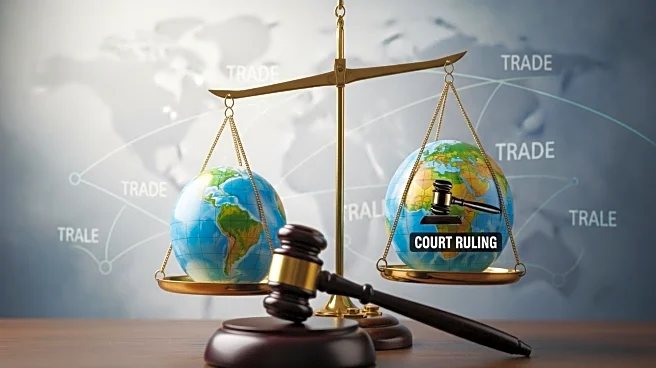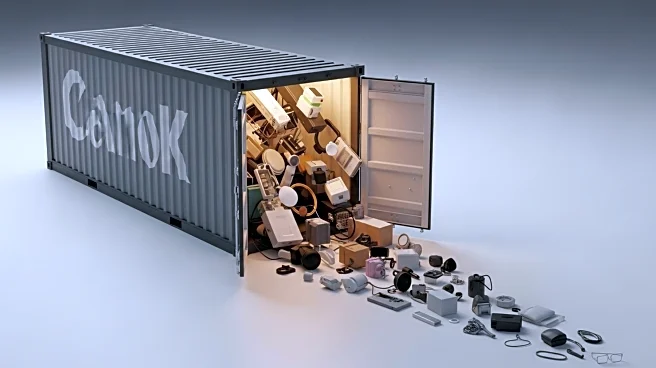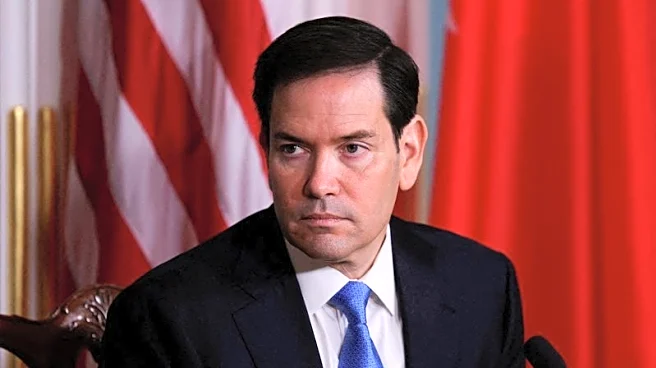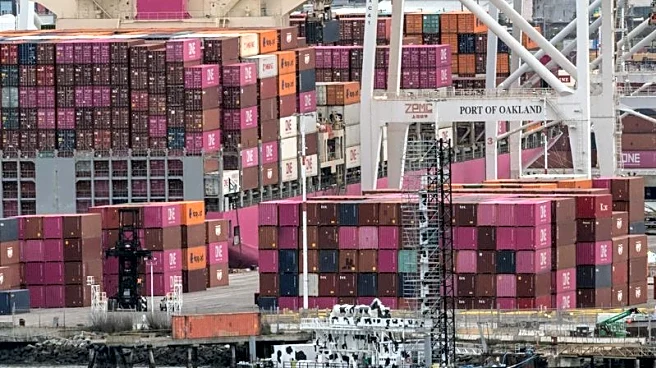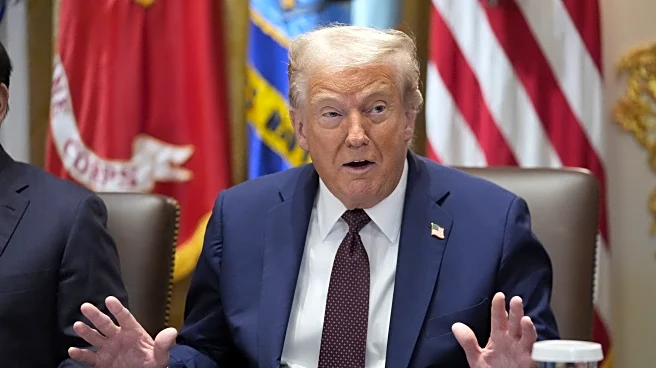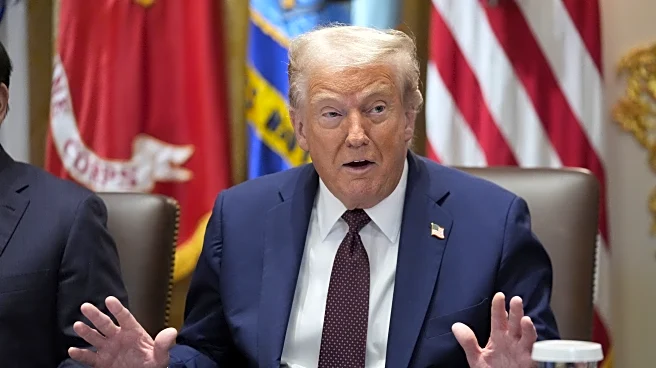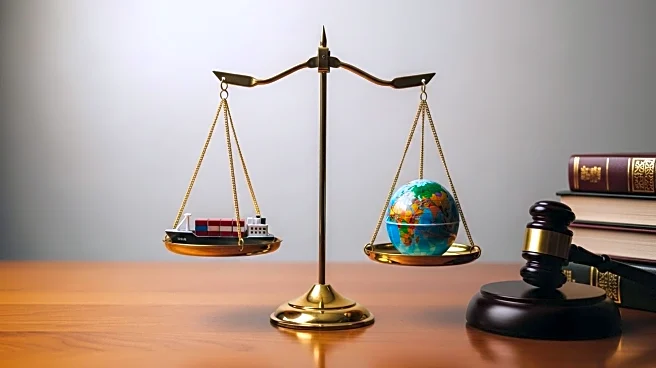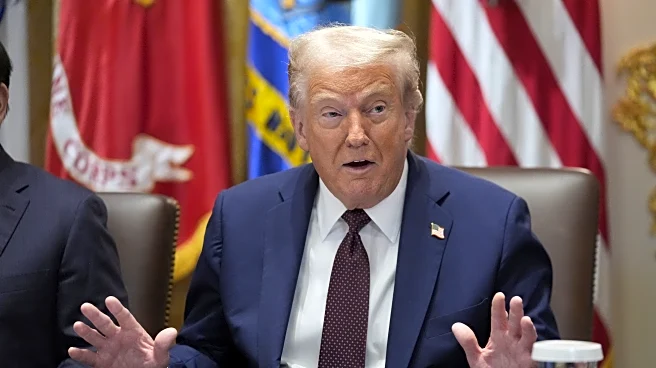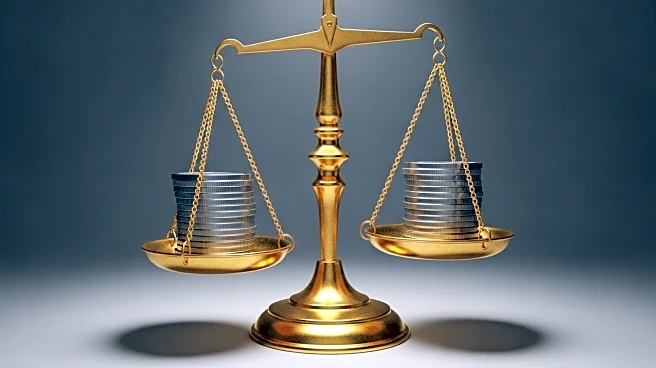What is the story about?
What's Happening?
A federal appeals court has ruled that many of President Trump's tariffs were issued illegally, posing a significant challenge to his trade strategy. The U.S. Court of Appeals for the Federal Circuit affirmed a lower court's decision, stating that Trump did not have unlimited authority to impose taxes on imports under the International Emergency Economic Powers Act (IEEPA). The ruling delays enforcement until mid-October, allowing the administration time to appeal to the Supreme Court. Trump's tariffs, which have been a central part of his trade policy, include duties on China, Canada, and Mexico, and have been used to pressure countries into favorable trade deals.
Why It's Important?
The court's decision could have substantial implications for U.S. trade policy and economic relations. Trump's tariffs have been a key tool in his strategy to negotiate trade agreements and address trade deficits. If the tariffs are removed, it could disrupt existing trade deals and impact industries reliant on imported goods. The ruling also highlights the legal limits of presidential power in trade matters, potentially prompting Congress to reassess its role in regulating tariffs. Businesses affected by the tariffs may see relief if the ruling leads to their removal.
What's Next?
The Trump administration plans to appeal the ruling to the Supreme Court, seeking to maintain the tariffs. If the appeal fails, Trump may need to explore alternative legal avenues to impose tariffs, such as Section 232 of trade law, which allows duties related to national security. The decision may also prompt Congress to reclaim its constitutional mandate to regulate tariffs, potentially leading to legislative changes in trade policy.
Beyond the Headlines
The ruling underscores the tension between executive power and legislative authority in trade policy. It raises questions about the use of emergency powers for economic purposes and the broader implications for U.S. governance. The decision may influence future administrations' approach to trade and the balance of power between the presidency and Congress.
AI Generated Content
Do you find this article useful?
